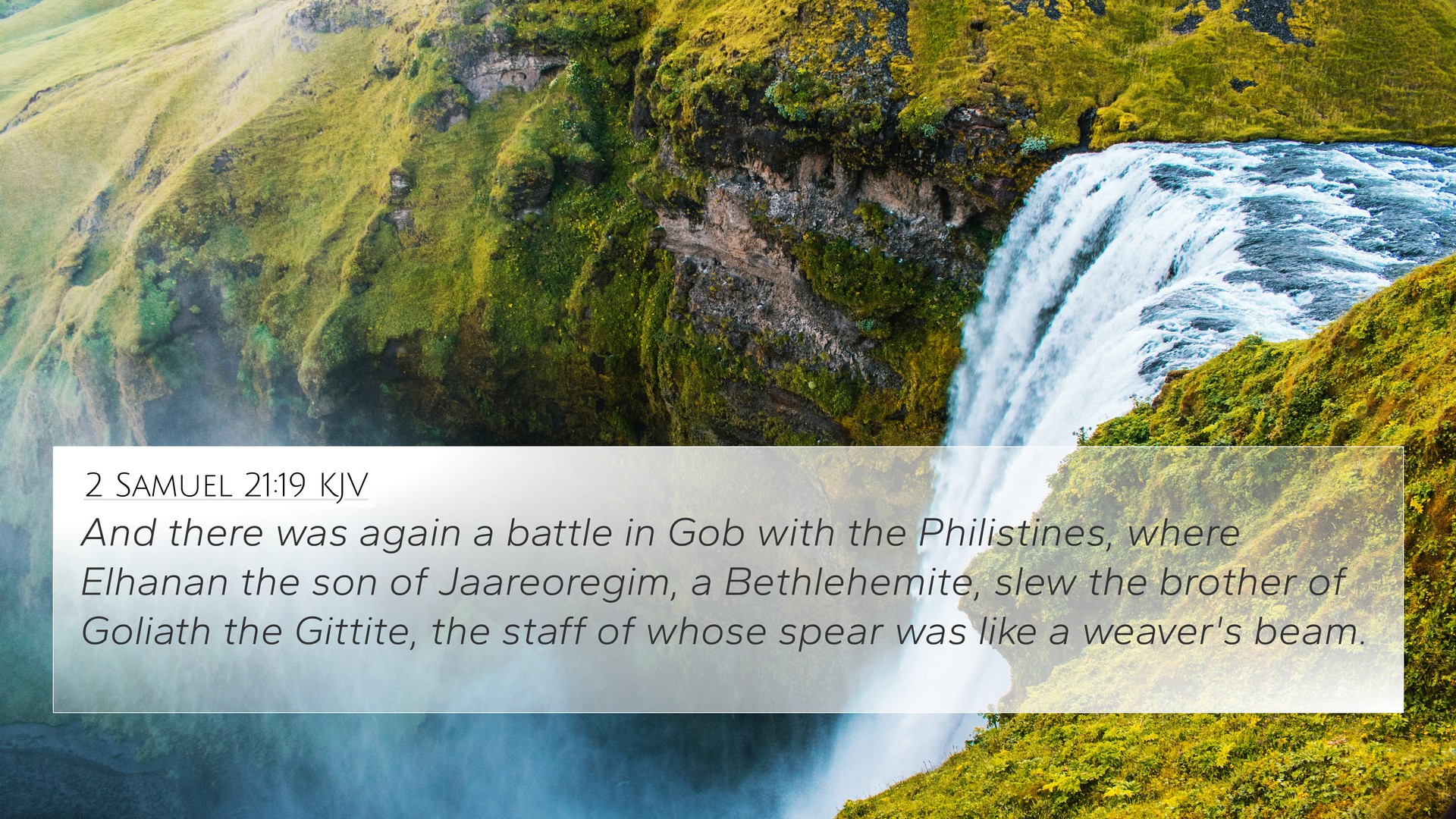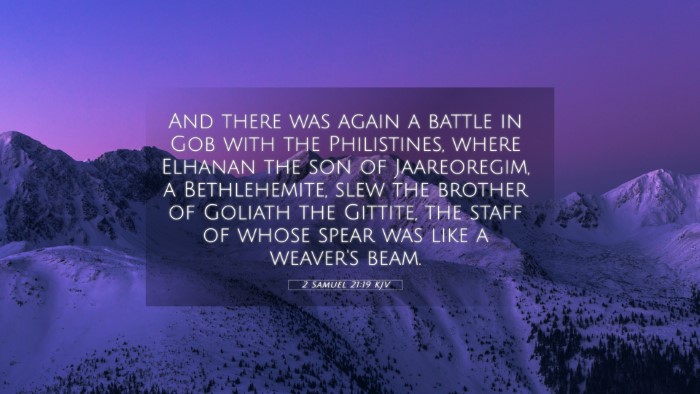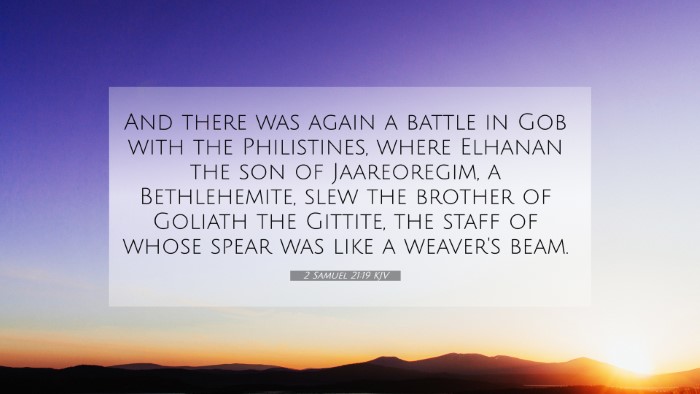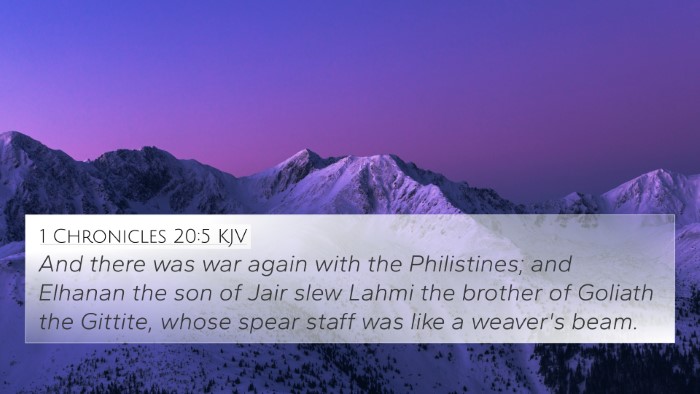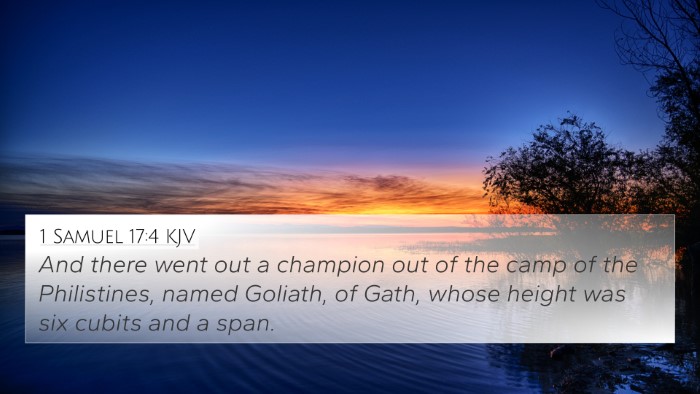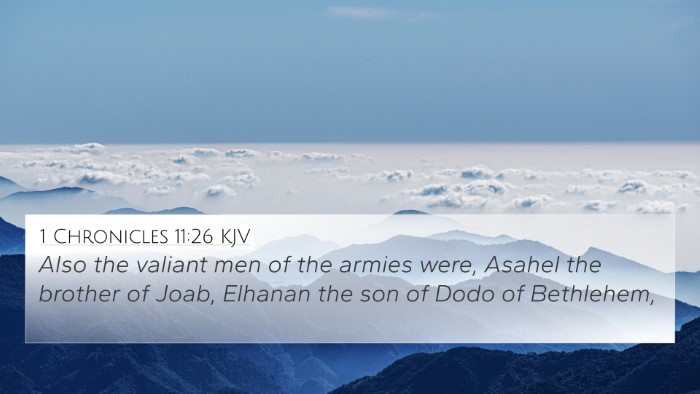Understanding 2 Samuel 21:19
2 Samuel 21:19 states: "And Elhanan the son of Jair killed Lahmi the brother of Goliath the Gittite, the staff of whose spear was like a weaver's beam." This verse, while brief, instigates a myriad of interpretations and connections within the broader biblical narrative. It emphasizes the legacy of David's victories and the ongoing conflict with the Philistines.
Contextual Analysis
This account appears within a section that recounts the battles David waged against the Philistines. Notably, Goliath's death had been a landmark event in Israel’s history, demonstrating not merely the might of an individual warrior, but the triumph of faith over seemingly insurmountable odds. The mention of Elhanan here shows that even after Goliath's defeat, the threat from the Philistines persisted.
Commentary Insights
Matthew Henry's Commentary
Matthew Henry reflects on this verse highlighting the continuation of David's lineage of fighters. He notes how the scripture reinforces the idea that the victory over Goliath was not a one-time event but a part of a larger struggle. Elhanan’s act of killing Goliath’s brother serves to show that the enemies of Israel continued to be defeated, which bolsters the morale of God’s people.
Albert Barnes' Commentary
Albert Barnes discusses the textual nuances regarding the identity of Elhanan. He points out potential textual variances that imply the recounting could be confused with David's victory over Goliath himself. This raises interesting questions about how history is recorded and retold within the scriptures, suggesting a deeper theme of divine providence in Israel's military victories.
Adam Clarke's Commentary
Adam Clarke dives into the linguistic elements of the verse, providing insights into the significance of the measurements mentioned about the spear. He emphasizes the magnitude of the Philistine threat through the physical description of Lahmi’s weaponry, suggesting a metaphorical representation of the overwhelming challenges Israel faced.
Bible Cross-References
For a deeper understanding of 2 Samuel 21:19, consider these cross-references:
- 1 Samuel 17:49-50: David’s original defeat of Goliath.
- 2 Samuel 21:15-17: Context of the ongoing battles with the Philistines.
- 1 Chronicles 20:5: A similar account of Goliath’s brother being killed.
- 2 Samuel 23:24: Elhanan mentioned as one of David’s mighty men.
- 1 Samuel 16:7: God’s selection criteria for His leaders.
- Psalm 144:1: Acknowledgment of God training hands for battle.
- Romans 8:31: Assurance of victory for those who are with God.
Thematic Connections
The verse highlights several themes relevant in both the historical and spiritual contexts:
- Divine Victory: It speaks to the continuous nature of God’s deliverance and support in battles.
- Legacy of Warfare: The persistent struggle against evil reflects the spiritual warfare themes throughout scripture.
- Faith and Courage: The actions of Elhanan remind believers of the importance of faith in facing challenges.
Connecting with Other Scriptures
Cross-referencing this verse also allows one to see links between the Old and New Testament:
- Hebrews 11:32-34: Highlights heroes of faith, including those who fought valiantly.
- Ephesians 6:12: The call to spiritual warfare against evil forces.
Conclusion
The verse provides a glimpse into the ongoing struggles faced by Israel under David's leadership while encouraging believers to find strength in God's promises amid adversity. Understanding the connections between this and other scriptural references enriches the reader's comprehension and appreciation for the biblical narrative.
Using Cross-References Effectively
When studying the Bible, utilizing cross-references can deepen one’s understanding of connections between verses and themes. Here are some tools and techniques:
- Consider using a bibliography concordance to locate verses by key terms.
- Employ a bible cross-reference guide to track themes and ideas.
- Engage in cross-reference Bible study methods to enhance comprehension.
Final Thoughts
2 Samuel 21:19 is more than just a historical account; it serves as a vital connection point within the overarching narrative of scripture. By leveraging the insights from public domain commentaries and employing effective cross-referencing strategies, one can gain a greater appreciation for how individual verses resonate within the whole, supporting the themes of divine intervention, faith, and perseverance amidst challenges.
